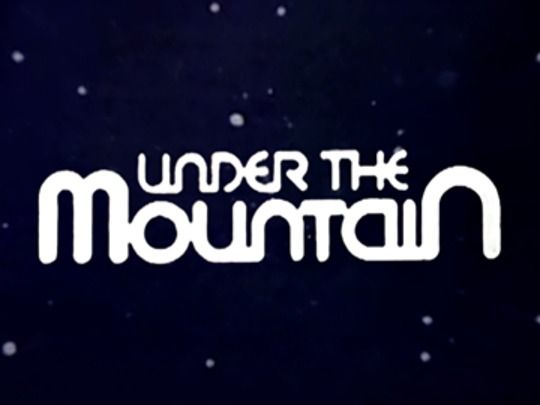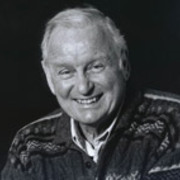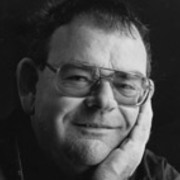
Under the Mountain
Television, 1981
This series has two backgrounds:
Putting the Wilberforces On-Screen
Under the Mountain, which first screened more than 30 years ago, was a defining moment in my career as a scriptwriter. Oddly enough it is also linked to Anwar Sadat, President of Egypt, who was assassinated at the same time.
I had began scriptwriting, in the distant days of 1975, vowing to do it full-time — with no back-up job — or bust. I nearly busted, but at that time, most people in drama (like me) were on a learning curve, and I wound up scripting such long-forgotten shows as Close to Home, A Going Concern and Radio Waves. Being a full-time freelance writer meant doing a quiet starve at times because work was intermittent. TV2's then Head of Drama was John McRae, an expat from England, who used mainly overseas writers for his better shows and took less interest in developing local writers.
This would change when Tom Finlayson became a producer for TV2. Tom was refreshingly independent and prepared to give Kiwi writers a chance. When Under The Mountain was mooted it was generally believed that Maurice Gee would adapt his own novel. Maurice was a fine television writer as well, so was offered the dramatisation first.
I had been given a copy of the book to read but had not — there seemed little chance of doing the show. Then one morning Finlayson phoned me at the ungodly hour of 10am and summoned me to his office at once because I was adapting the show (Maurice otherwise busy) and had I read the book? Falling back on finely honed survival instincts, I lied and said yes. He then asked if I thought the Wilberforces (alien humanoids who could morph into monsters) would work well on screen. They could have been a new rock band for all I knew, so I lied again and said yes.
Luckily it was a long bus ride into town and I skim-read as never before.
Scripting Under the Mountain represented quite a challenge. I had begun my writing career doing 23-min dialogue episodes from a full scene breakdown for the soaps. Initially that was daunting, and this was seven episodes - developing the story from episode outlines to scene breakdown and dialogue.
But Maurice's book had a strong plot structure and was very visual - ideal for screen adaptation. We worked it through with very little change and produced seven very tightly scripted episodes, ably edited by script editor, Duncan Stewart. Deadlines, as I recall, were tight and Tom (never the most patient of mortals) once sent a terse message asking where the drafts were. I replied (also by message) "if you want drafts, open a window". Tom's reaction taught me another valuable lesson - never joke with terse producers.
There was a great sense of community to making television shows in those days, with little of today's cut-throat free market. The drama staff were salaried and there were excellent resources from TV2's design department. Under the Mountain represented a special set of challenges because it was the first in which major special effects were used (such as humanoid aliens changing into giant slugs) creepy underground tunnels, light-beams connecting Auckland volcanoes and earthquakes.
Computer graphics were very much in their infancy and consisted mainly of Mr Jones (the good-guy) zapping Wilberforces with light-beams from his hands. My first draft had Mr Jones zapping like Arnold Schwarzenegger. A (terse) memo from Tom said to be sparing in their use as they were very expensive. I think I was rationed to about three zaps per episode.
Without computer graphics, the Wilberforces (headed by the great Bill Johnson) had to 'melt' their faces with some glycerine goop threaded through plastic tubes in their hair. They looked a bizarre sight between takes.
The series was a first for other reasons too. TV2 had done period dramas, but this was contemporary: real kids and real backgrounds, and had an immediacy that its audience loved. In fact it set a trend for others, such as Children of the Dog Star, Steel Riders and Night of the Red Hunter.
Both the kids, Rachel Wilkinson and Lance Warren, were great. Lance, I recall, had just lost his father and still working through the grief process. Also (as happens with child actors) his voice began to break during production, but nothing too much showed.
At the end of Maurice's novel, Auckland is devastated by an earthquake. Lacking budget facilities, Tom wistfully decided we could not destroy downtown Auckland, but Queen's Arcade at the bottom of Queen Street was being demolished ... We filmed one man (Tom Finlayson's own cameo) scrambling clear of the broken stonework but the scene was never used. It ended up in a goodbye-video made when he left TV2 — I think to illustrate his talents as a survivor.
Under the Mountain meant a great deal to me. It was very satisfying being able to adapt a contemporary young people's novel onto the screen (the first, if memory serves?) and I was able to learn the disciplines of writing a full series, adapting the story into scene breakdown and dialogue. Director Chris Bailey shot the seven episodes into eight.
It meant my tightly-crafted cliffhanger endings went but I received the unexpected windfall (much to Tom's chagrin) of an extra episode payment. It was also my first nomination for a Best Drama Award. They were then the Feltex Award, but I would have to wait some time longer for my first win.
Anwar Sadat? TV One and TV2 were then in competition to each other and TV2 (I think) screened its news half an hour earlier (at six) than TV One. If memory serves, Under the Mountain aired on a Monday and Sadat was shot by fanatics on a Tuesday. I must record with a certain guilty shame at being relieved he didn't get shot a day earlier; it was captured on video and such a dramatic incident on the TV One news might have reduced viewing figures for our show.
Not nice but even then, ratings were important.

